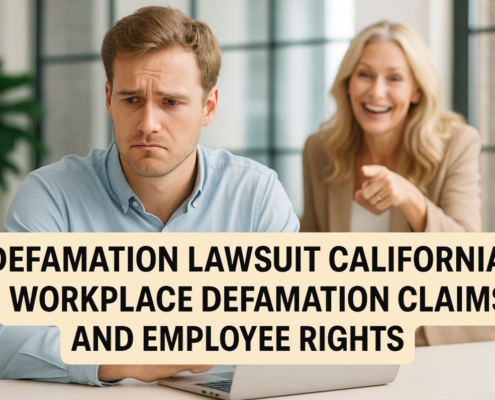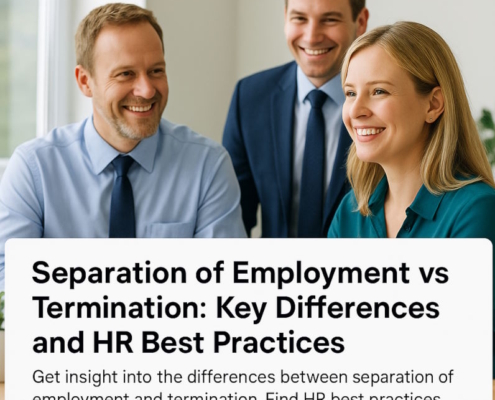Introduction
It is important to think about the complicated topic of working relationships and how to handle them as early in the proceedings as possible, whether a company is being sold, acquired, or restructured. All parties involved in a merger or restructuring may have good commercial and legal reasons for the selling corporation to formally end employment links with its employees before the transaction closes.
Even in cases where the parties expect the seller’s workforce to easily start working for the acquiring company, this is nonetheless the case. However, there are also strong arguments against ending those ties, which makes the dangers “hardly worth it.”
A seller’s staff’s employment can be terminated to reduce the risk of liability for work-related claims and to establish a clear date of separation from one company before employment with another business begins. This is especially advantageous if the next job will probably be with the company buying the business, and the seller’s previous workers will still be employed at the same location after the purchase, carrying out the same tasks, utilizing the same tools, and reporting to the same leadership.
Both the seller & the buyer are protected by a formal, well-documented termination of employment.
However, ending an employment connection might come with a hefty price tag. All unpaid salaries, accumulated vacation time, and perhaps severance compensation must be given to employees upon termination. These expenses could make employment separation unappealing. Employment separation also has practical ramifications that may make the buyer’s transition more difficult and cause unnecessary delays in payroll, benefits, and operations setup.
In order to preserve the privacy of the transaction and to eliminate any doubt about keeping the staff required to facilitate a seamless transfer of ownership, a seller may also choose not to fire its staff.
The employment-related elements of an agreement are a procedure rather than an event, in any case, and evaluating these matters at an early stage will guarantee that there is enough time to either build up the structure for a seamless employment transition or appropriately prepare for dismissals of employment. Being prepared to start this process earlier can provide superior business value to both sides of a transaction by becoming an added asset to the seller and a bargaining chip for the buyer.
It reduces the reliance on escrows or subsequent modification. Thus, by anticipating employment law concerns, it is possible to decrease the number of post-transaction complications, and at the same time, it may raise the deal value. But, please note that employment law considerations are never the key determinant of terminating employment associations and what conditions should be included in a severance contract.
Problems with Severance Agreements
Severance agreements ought to be carefully considered if a business seller chooses to fire every employee at the conclusion of the transaction, because they can provide much more than just a win-win situation for the employer and employee, which facilitates the impacted employees’ change to new possibilities.
An effective severance agreement can offer both the buyer and the seller the following advantages: a valuable release and waiver of employee claims; a class action exemption and arbitration consensus; an acknowledgement and acceptance of strong terms that identify and guard against unlawful access to or dissemination of the selling entity’s proprietary and confidential trade and business secret knowledge; and the development of a structure for the restitution of company property.
These conditions may also safeguard and enhance the worth of the possessions involved in the transaction while providing a certain amount of peace of mind for the buyer and seller by reducing their risk of litigation after the transaction.
Because state-by-state variations in employment termination legislation and the influence of many circumstances, such as worker age and the percentage of employees quitting their jobs, make a universal severance agreement template insufficient. Severance agreements ought to be written with the specific time and conditions for which they are going to be utilized in mind, as the laws controlling the acceptable breadth of secrecy and non-compete terms are subject to change. Lastly, negotiating the usage of severance agreements may be necessary if the business is unionized.
Getting agreements that satisfy “all of your options” by incorporating the widest range of release conditions may seem ideal at first glance. But there is a cost associated with a waiver & release. Issues, including how much money a worker and the court will consider appropriate consideration, as well as the difficulties of individual talks with employees regarding that amount, can make it difficult to determine how much a company is ready to pay in return for a waiver & release.
When creating a separation agreement, keep these fundamental legal factors in mind:
- A claim waiver can have a consideration and revocation period
Employees over 40 have specific rights under the Older Workers Benefit Protection Act (federal) when it comes to the release of claims, provided that the release includes a claim as per the Age Discrimination in Employment Act. Workers who are 40 years of age or older are entitled to written disclosures. Additionally, if an employee over 40 is fired as a member of a class or group of workers (at least one), they have the right to a 45-day contemplation period.
Additionally, a state can have its own law for consideration and revocation period. For instance, in California, employees of all ages have the right to a five-day deliberation period and must be made aware of their entitlement to legal advice for the majority of severance agreements, as of January 1, 2022. Severance agreements must clearly state the revocation period.
Additionally, certain states may contain mandatory language to enforce specific clauses, such as the California legislation pertaining to secrecy restrictions, which is detailed below.
- To account for downstream liability concerns, make sure the release expressly mentions the seller’s successors
Employers should refrain from including language in their contracts that implies that the purchaser is a successor-in-interest.
- Make sure the contract informs staff members of any responsibilities they could have with relation to the seller’s material and intellectual property
Indicate in detail which assets the employer considers proprietary and confidential trade and business secret information, as well as the measures the employer takes to prevent their use or exposure.
Depending on the state law in effect, companies may need to reduce the scope of confidentiality & non-disparagement clauses, even though they may wish to have some say over the story of a transaction. For instance, in California, companies must make sure that any secrecy clause in a severance contract doesn’t try to keep a worker from speaking out about illegal activity at work.
Concerns may also arise from transactions affecting non-California workers. A while ago, the NLRB made a ruling that has a retroactive effect: it believed that non-supervisory workers should be subject to specially designed confidentiality & non-disparagement provisions.
Employers must avoid non-compete and non-solicitation agreements that violate the regulations of the involved state. As an example, California laws tend to bar the application of non-compete contracts on employees, with the state courts becoming more inclined to scrutinize the non-solicit contracts.
Resist the temptation to add non-compete and non-solicitation clauses on the off chance that they can be made in some way legally binding. The employer may face more severe issues if such illegal elements are included in the agreement, and it may even be grounds for declaring the entire severance arrangement unconscionable.
Strong legislation in California guards against the improper use and publication of proprietary and private company and trade secret data. A well-written clause safeguarding the company’s assets can thereby address some of the issues that non-compete & non-solicitation contracts are intended to avoid. Requiring employees to initial or sign a clause specifically acknowledging the revocation period helps prove informed consent and reduces future disputes.
- Examine whether the seller’s choice to draft multi-state severance agreements in order to reduce the administrative load may be influenced by any additional state-specific factors
Employers should give significant consideration to offering severance agreements that are customized to meet the legal requirements of the state in which a mass layoff occurs, based on the density of impacted employees in that jurisdiction.
In order to ascertain whether these factors justify the creation of distinct severance agreements tailored to each impacted state, employers should collaborate with their legal advisors to assess the number and extent of laws pertaining to severance agreements in a given state, the number of employees impacted by the deal in a given state, and cost factors. In multi-state transactions, consider how the revocation period and other employee rights vary across jurisdictions.
There are respectable law offices in California that may work with your deal team and offer employment-related subject matter expertise to aid you in accomplishing your objectives if you are preparing a transaction or foresee the chance of one. Expert guidance ensures that all terms, including the revocation period, are properly documented and enforceable.































